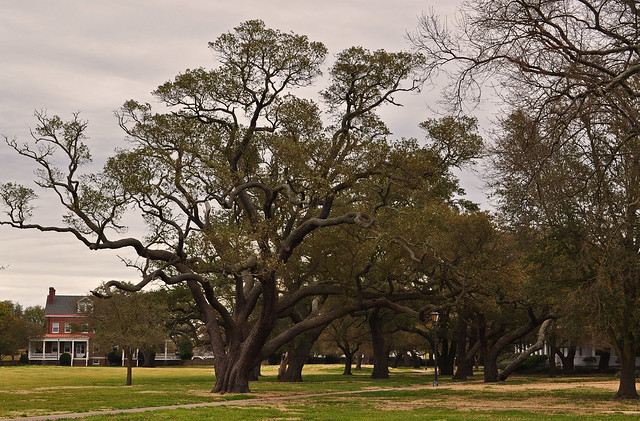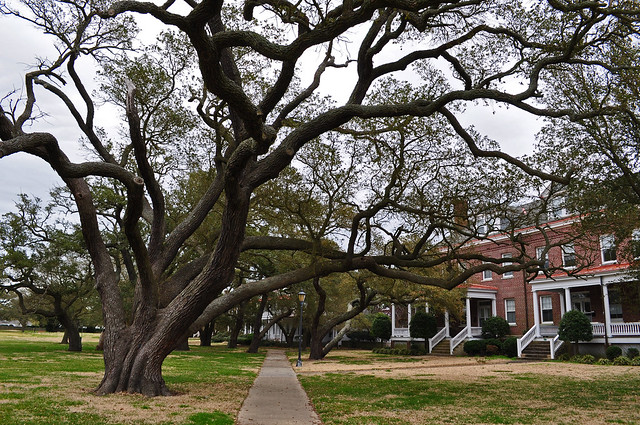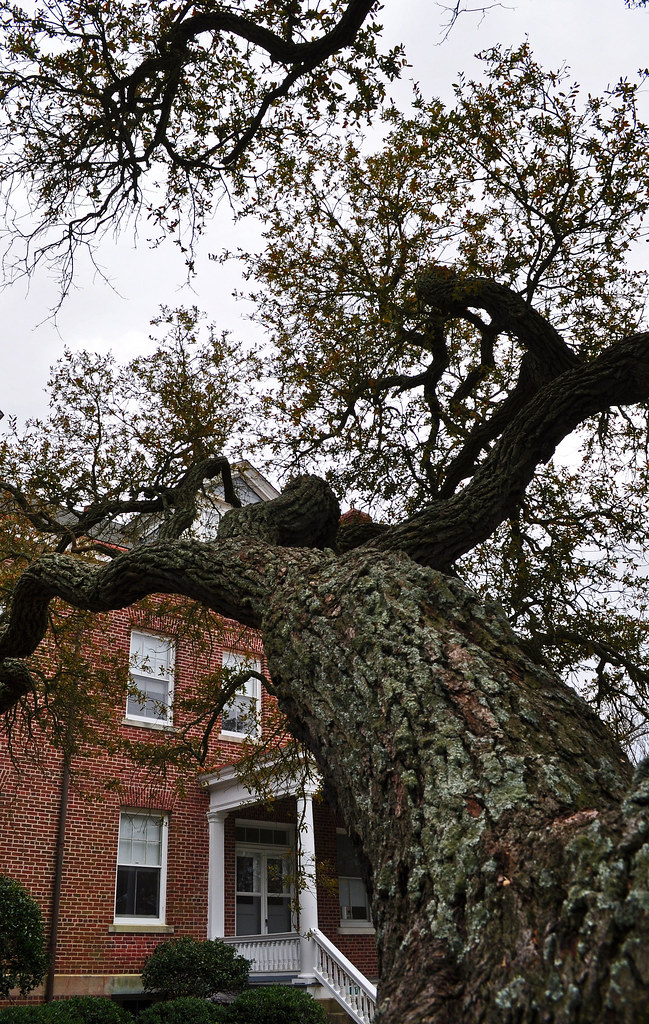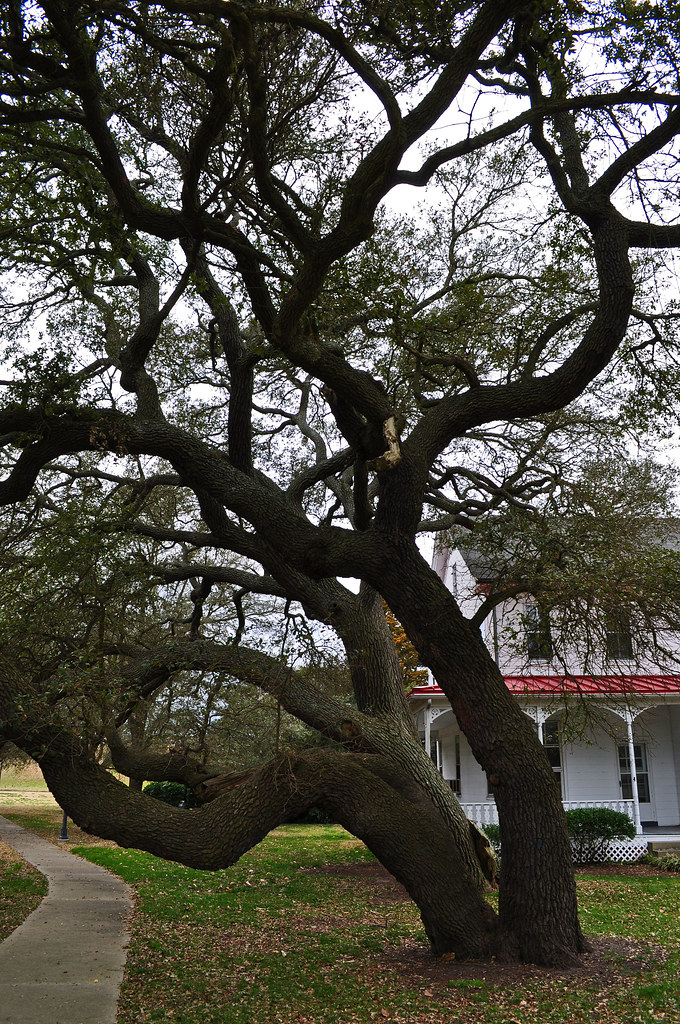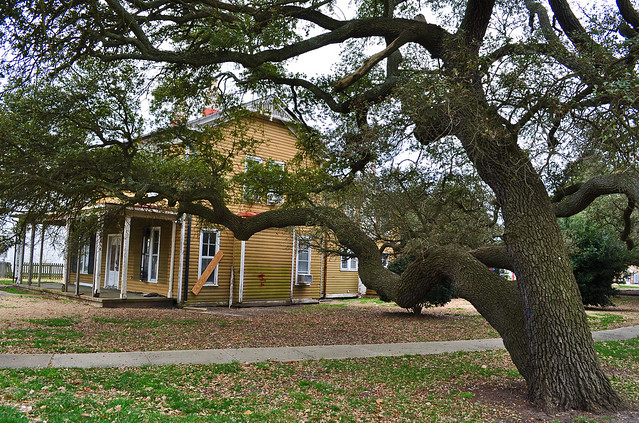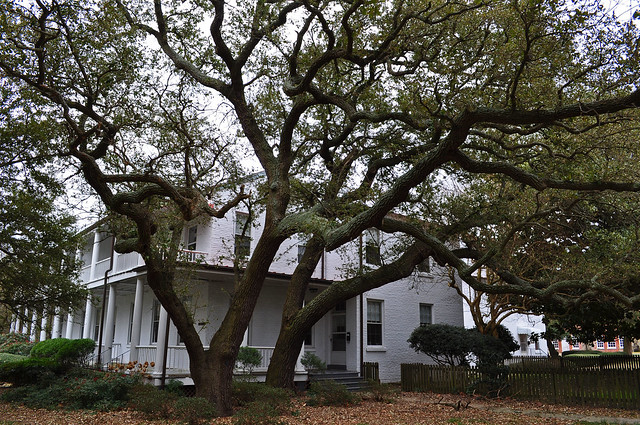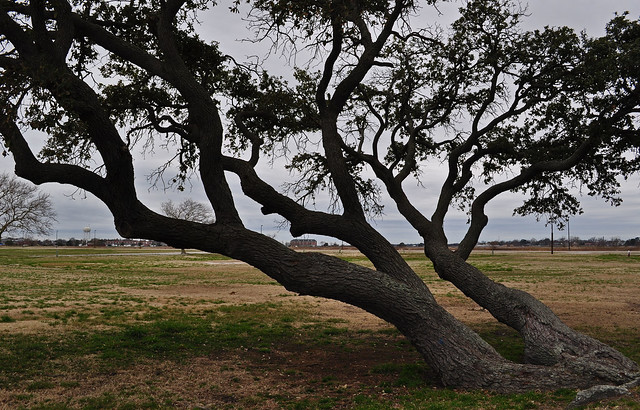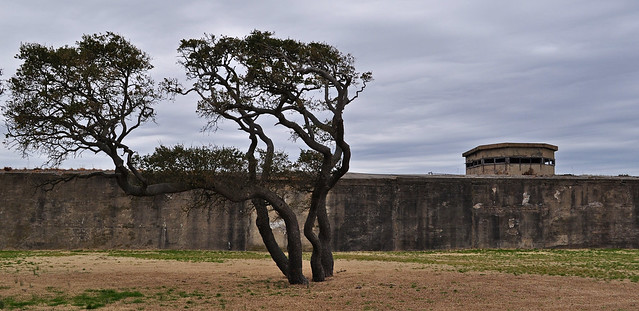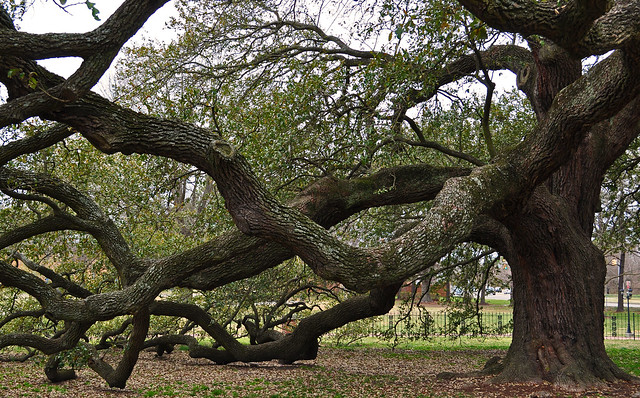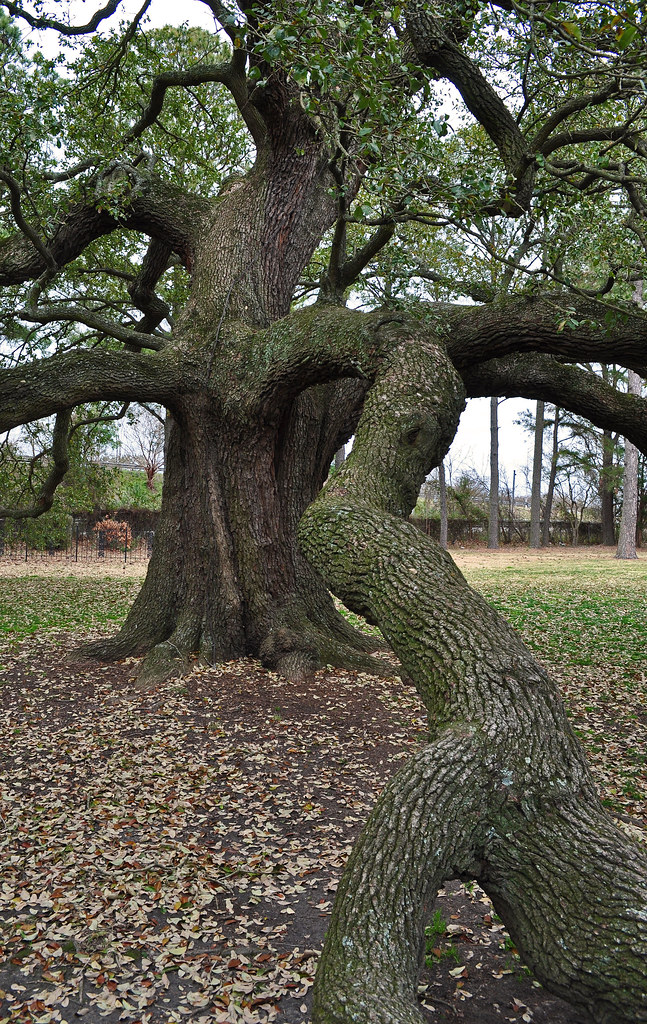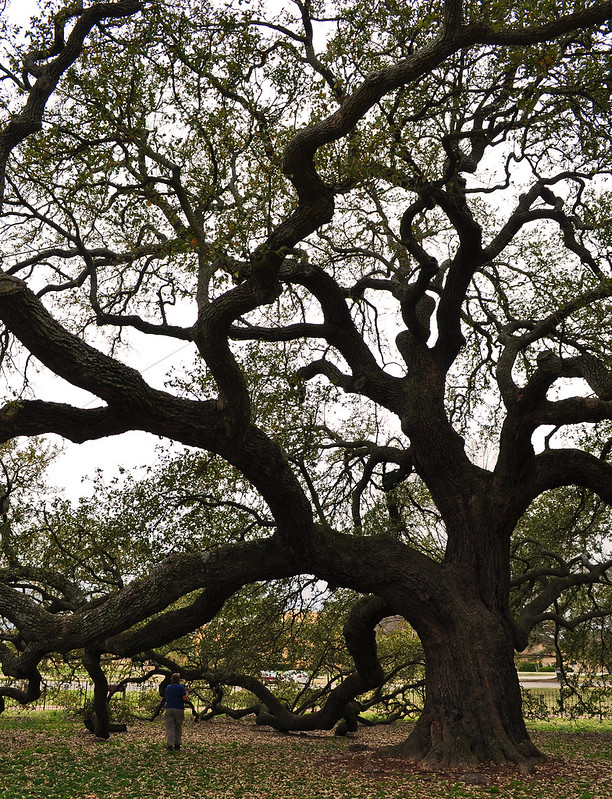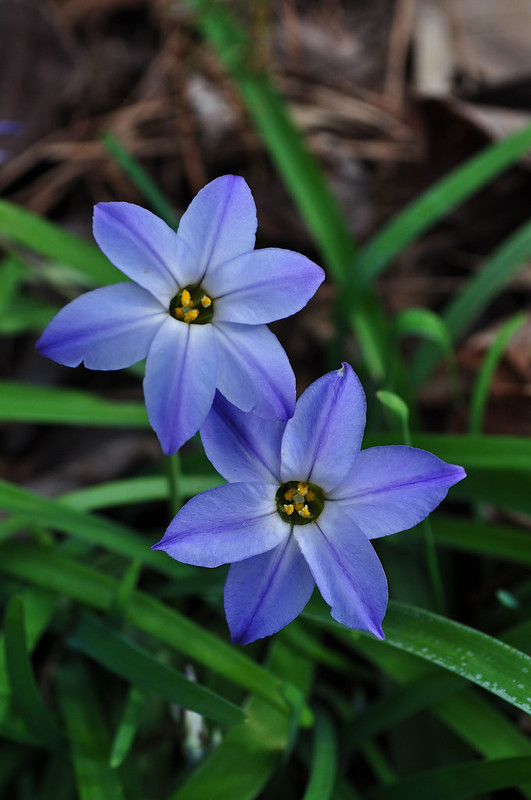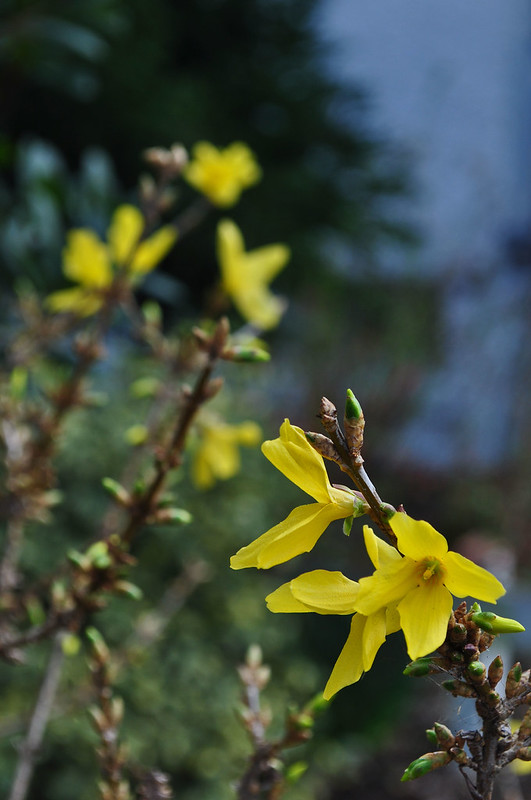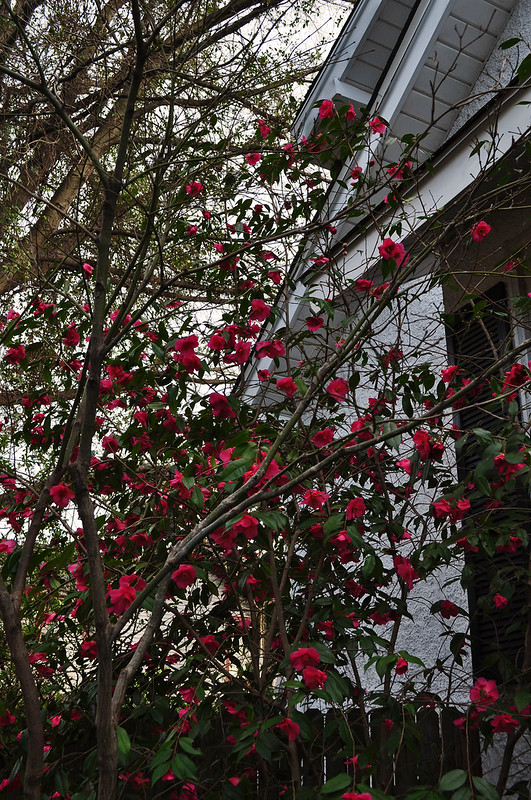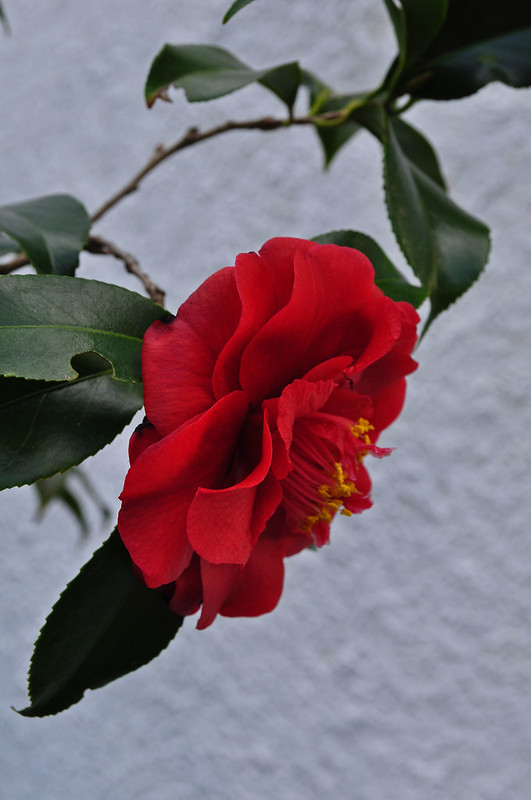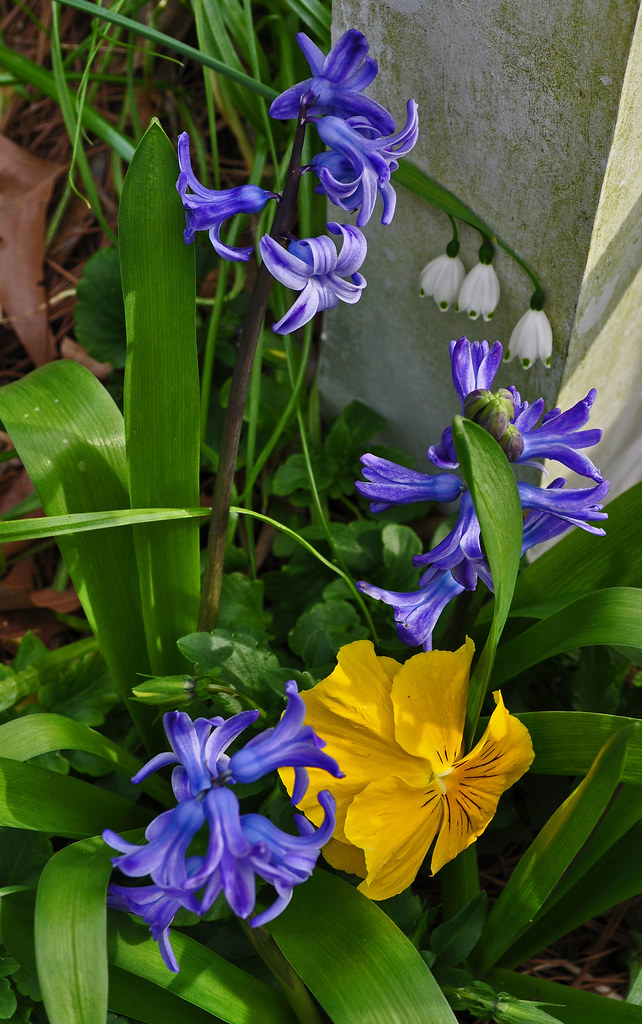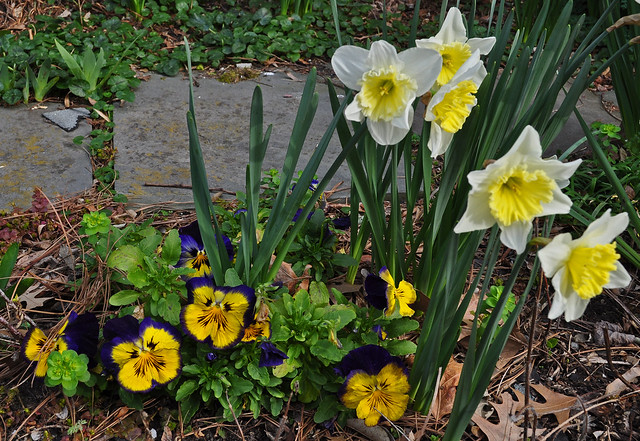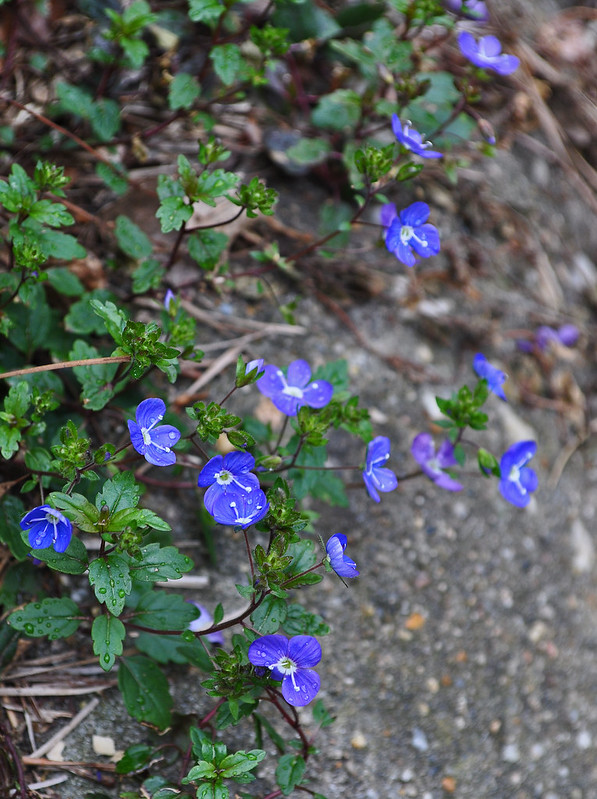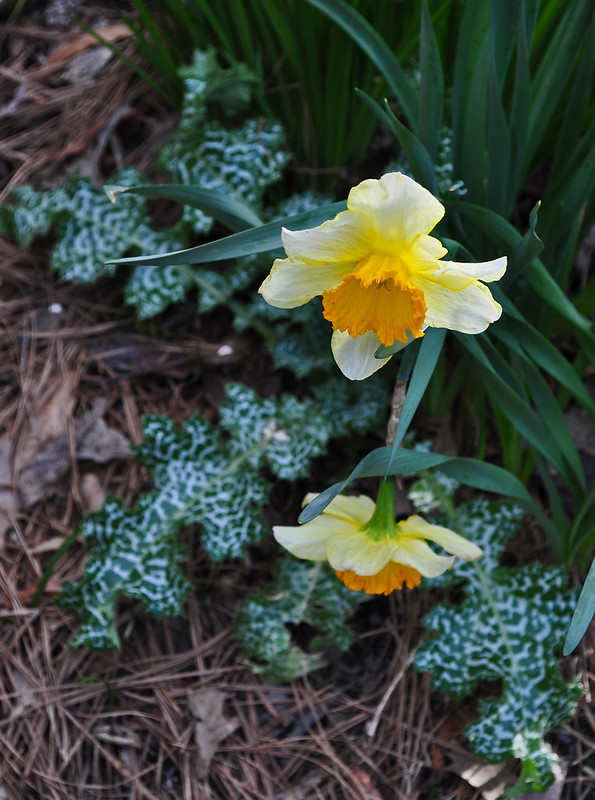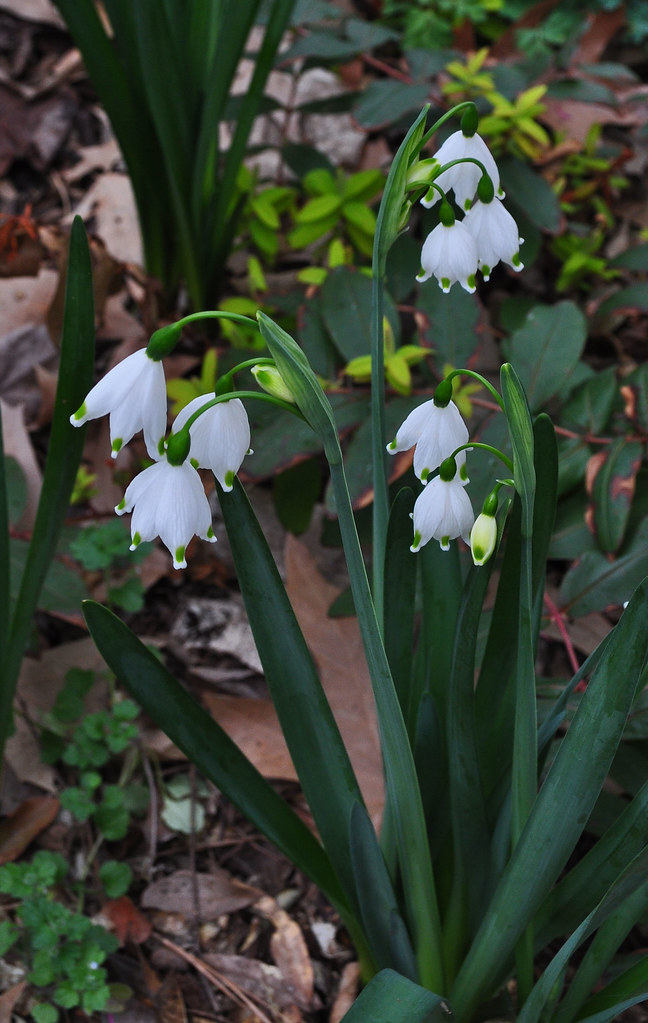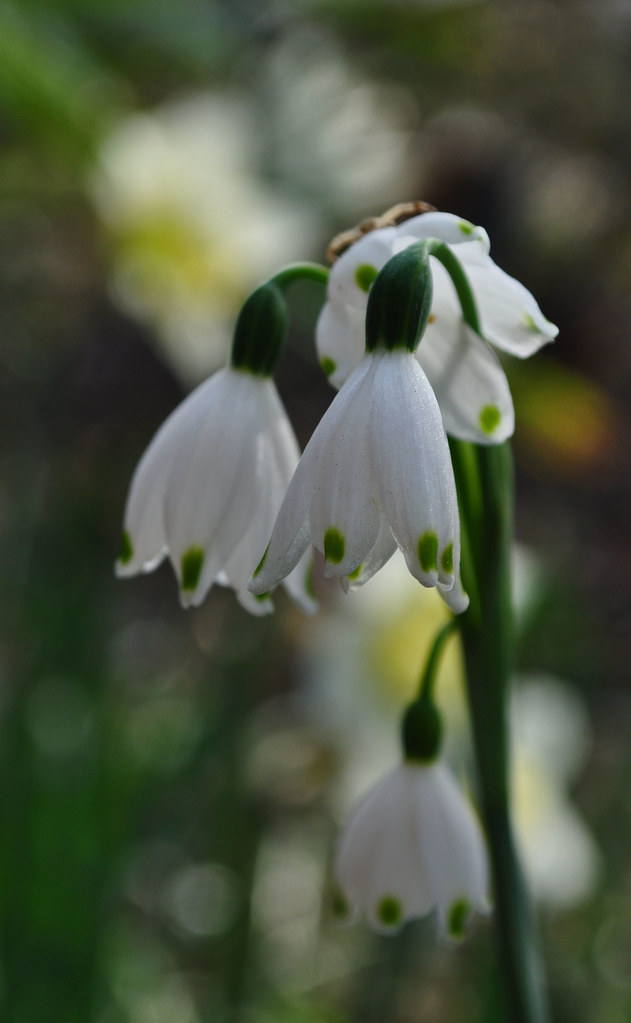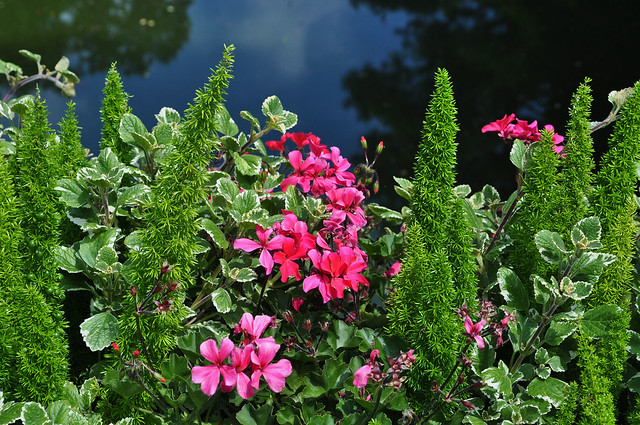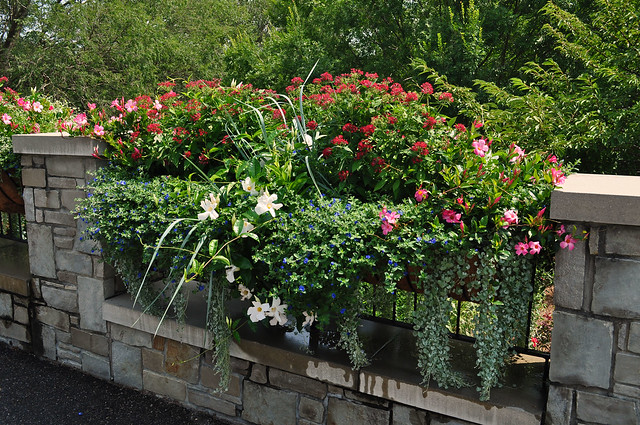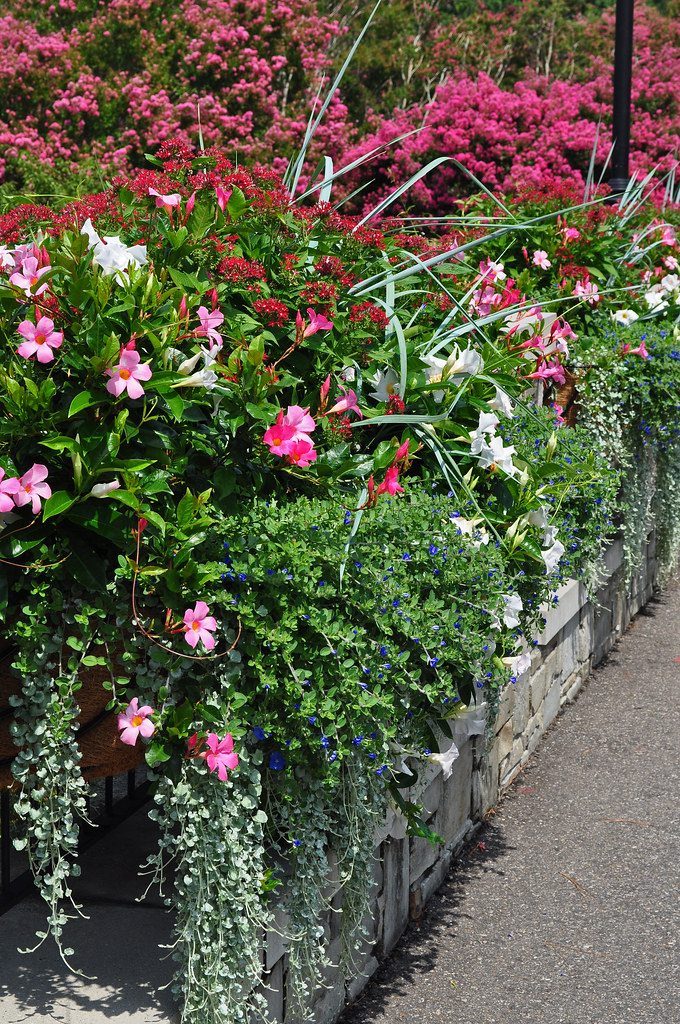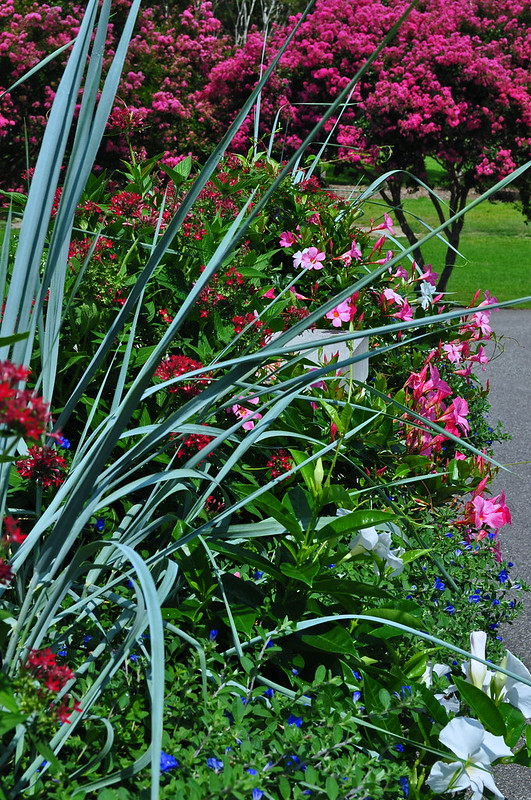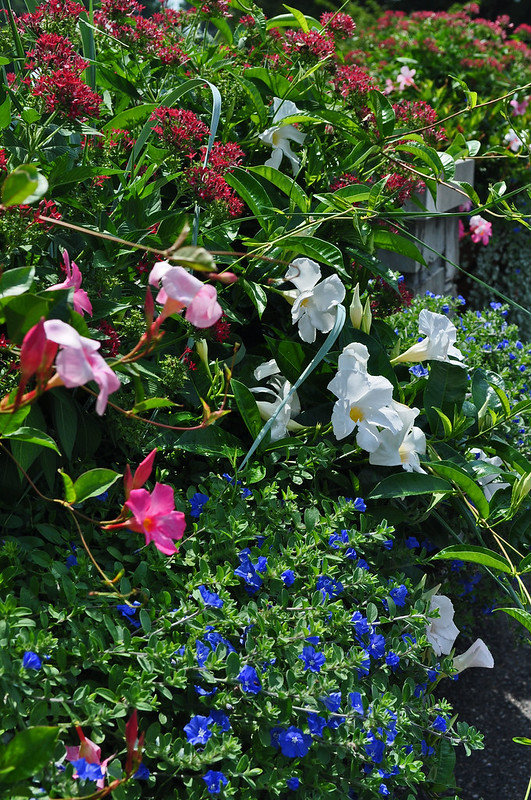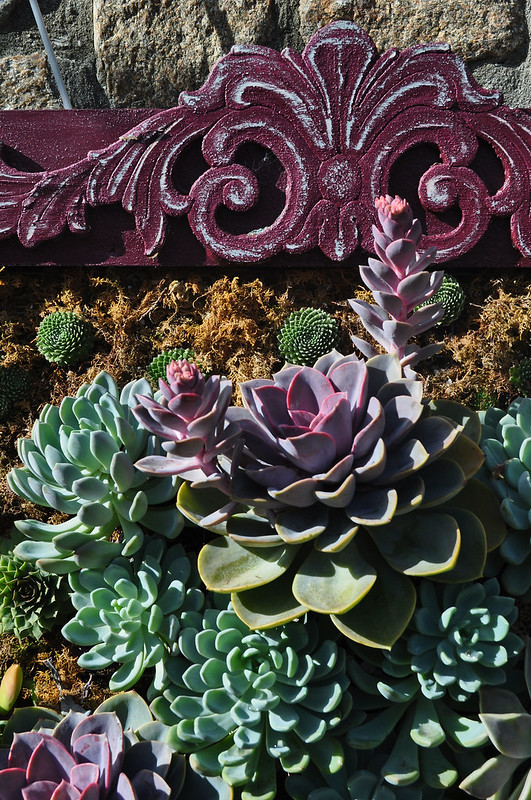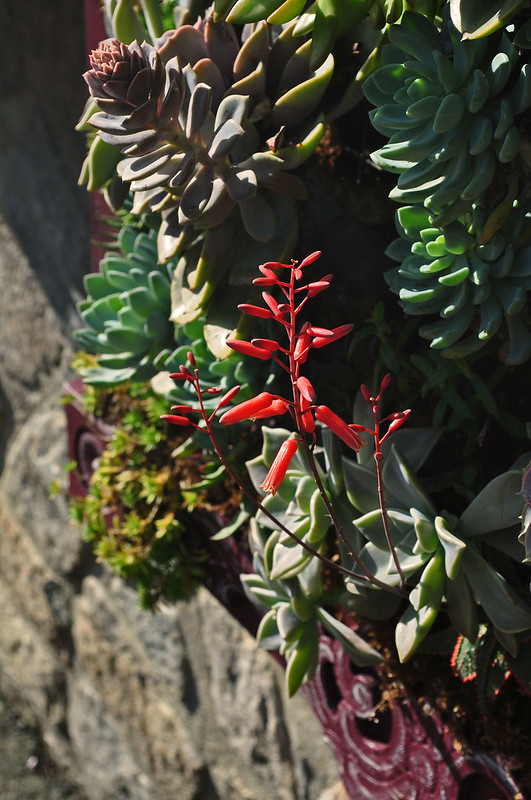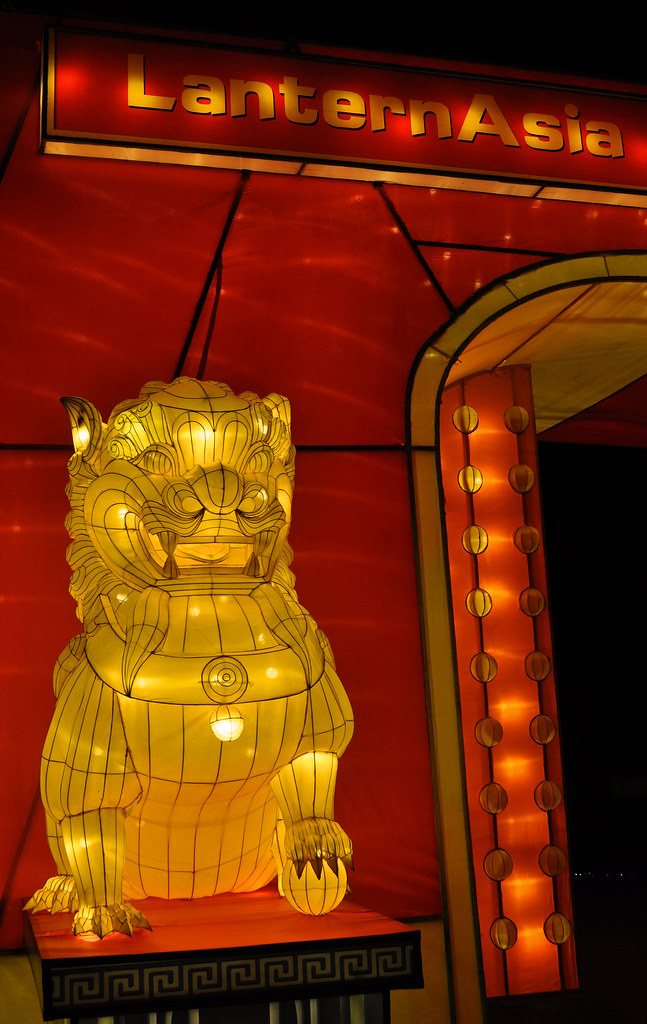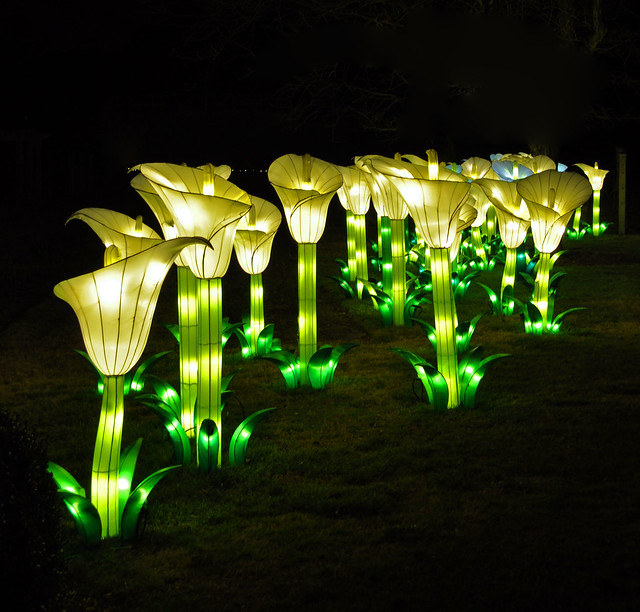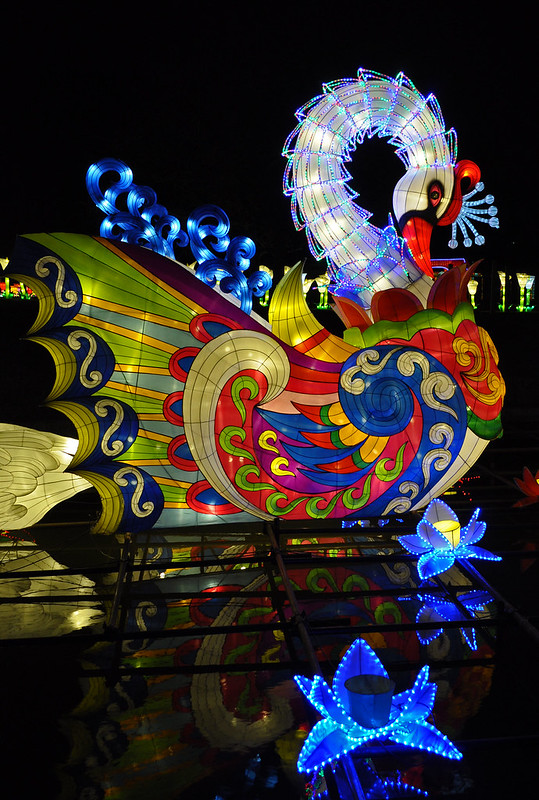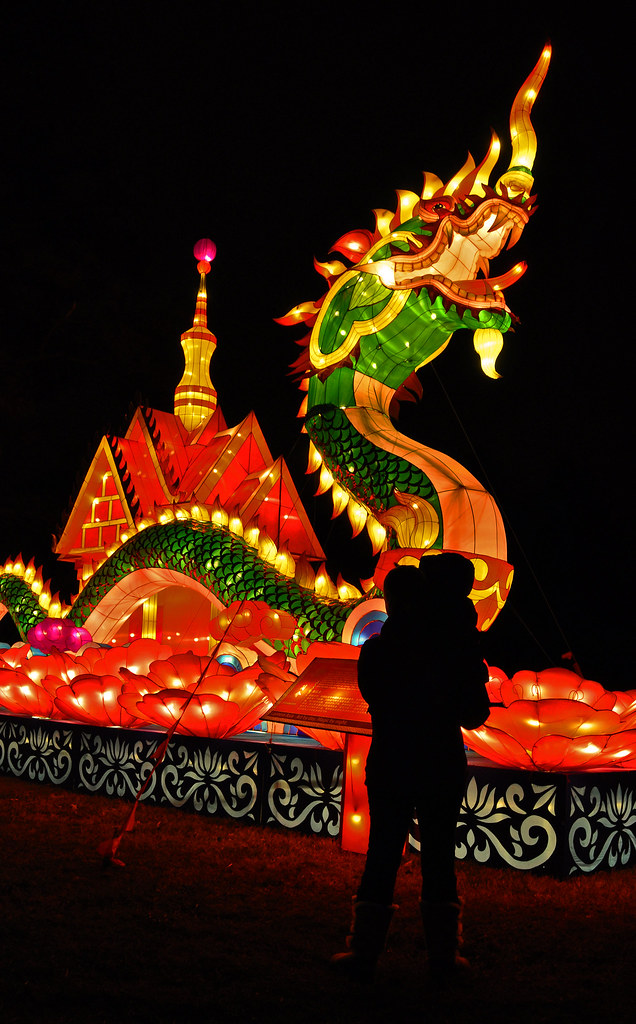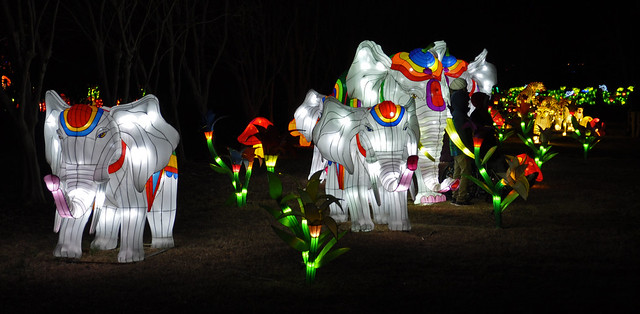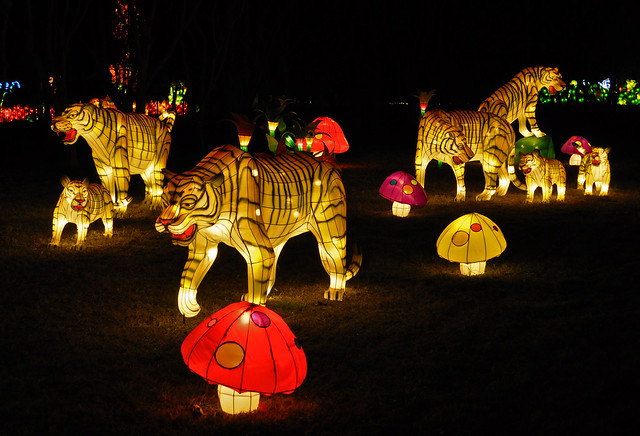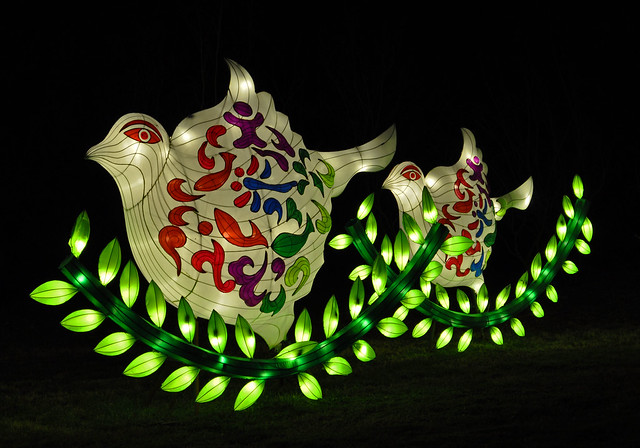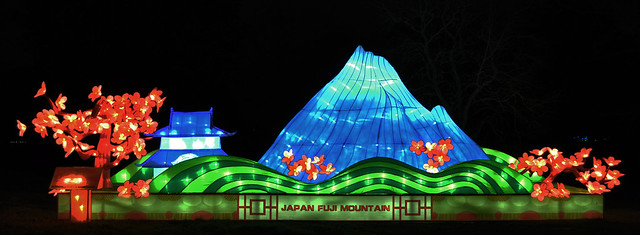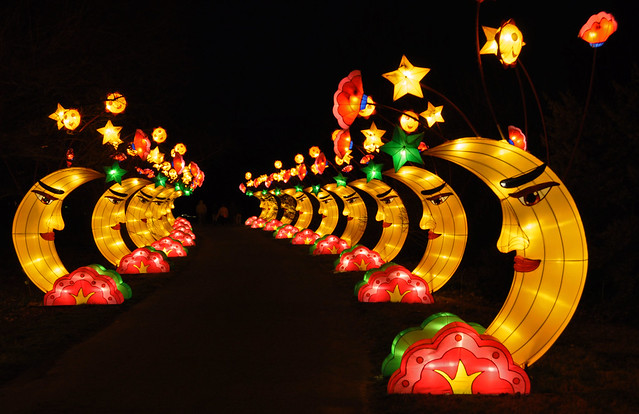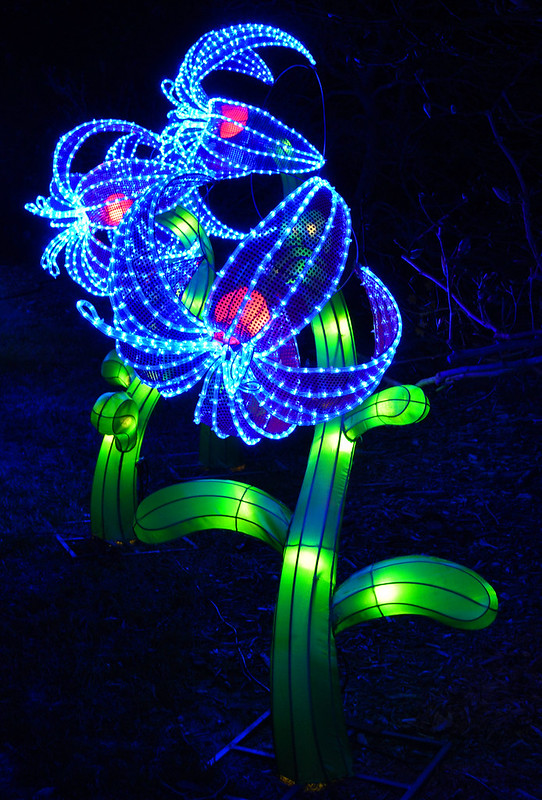March 29, 2016
Live Oaks at Fort Monroe
Recently my friend Marilyn, who blogs at Adventures of a Vagabond Volunteer, came for a quick visit. She primarily wanted to see the garden where I work, and the lantern show that is currently going on there. The next day I took her to Fort Monroe, which has become a favorite place for me to show out-of-towners. A couple of summers ago I went there to photograph crapemyrtles for a Bloom Day post, but on this trip I wanted to focus on the place's many live oaks (Quercus virginiana). The southeastern corner of Virginia is the most northerly home for this species, and the tree's presence creates a landscape distinctly different from the rest of the state, one more like that of places much further south. My first childhood awareness of this tree was seeing contorted specimens growing among the dunes as as we traveled through Ocean View on the way to my grandparents'. I was struck by the way they all grew in the same direction, being shaped by the prevailing winds coming from the bay. My next live oak encounters occurred when I moved to Norfolk to attend school. There was a particularly large specimen near my dorm which could be easily climbed for solitary contemplation, or for an entire council of folks engaged in heady discussions. My love for this species was sealed when Charleston became my home. There a slightly warmer climate allows these trees to assume their full potential, and Spanish moss draped over their branches adds magic, mystery, and animation. Asked what my favorite tree is, most days I would say live oak, on others it might be bald cypress, one or the other or both.
As we were leaving Fort Monroe, I wanted to show Marilyn the nearby Emancipation Oak, which is one of the largest and oldest live oaks in Virginia. Before the Civil War it was illegal in Virginia to teach slaves to read and write. During the war the Union General William Butler declared fugitive slaves "contraband", who would never have to be returned to their owners. As a result Union held Fort Monroe became a magnet for African Americans fleeing slavery, and under the shade of this very oak many were taught to read and write for the first time. The tree was also witness to the very first reading of the Emancipation Proclamation in the South, hence its name. Every time I see this tree, my eyes fill with excess moisture.
For some scale, look for Marilyn in the photo below.
Labels:
Around Town,
Fort Monroe,
History,
Live Oak
Location:
Fort Monroe, Hampton, VA, USA
March 27, 2016
2016 Winter Walk-Off Wrap Up
I am so late with this Winter Walk-Off Wrap-Up post that you likely thought I had forgotten about it. Well I haven't; real life sometimes gets in the way of virtual life. This year I had 14 participants, and several who walked in spirit, the needs of their own real lives superseding the virtual. Without further excuses, here are this year's Walk-Offs, in the order that they were received.
#1 - Shirley in San Antonio
Shirley and her sister-in-law walked a three mile loop in downtown San Antonio, a city I have always wanted to visit, mainly for the River Walk. This is a great way to appreciate and celebrate the gift of water in a climate where is can sometimes be scarce. Shirley included many things in this post that I like; Olmec heads, bald cypress, bikes, cormorants, crapemyrtles, and old houses.
#2 - David in Virginia Beach
I was so glad to get an entry from someone nearby, especially from David; I have admired his photography for sometime now. David's walk took place at the Elizabeth River Nature and Canoe Trail. For an area that owes its whole existence to the intersection of water and land, it is nice to see more of us are appreciating these spaces in their more natural state.
#3 - Beth in Wisconsin
In another water heavy post, Beth takes us on a walk by Lake Waubesa, where winter had loosened its grip much earlier than normal. In anticipation of the thaw, fisherman were preparing to haul their ice shacks from the still frozen lake, all the while you can almost hear the crack, drip, and flow of ice turning into water.
#4 - Janet in South Carolina
Janet has participated in every one of my Winter Walk-Offs, which I really appreciate. This year her husband and their dog Skyler walked with Janet as the South Carolina Upcountry was waking from winter. Along they way there was a mystery hole to be discovered, and a symphony to enjoy.
#5 - Hoover Boo in Southern California
Water, or rather the lack of water, also plays an important part of Hoover Boo's walk. This was also the case for her 2015 Walk-Off, and despite the predictions for El Nino, drought will likely be something California gardeners and non-gardeners alike will continue dealing with for some time to come. Her post unfortunately includes many dead trees, but there are also wild pops of color coming from drought-defying bougainvilleas.
#6 - Sarah in Maine
Sarah has participated in several of my Winter Walk-Offs, and they often take place on skis, but not this year. It is hard to imagine a winter in Maine without much snow. Sarah and an old friend of hers stroll through the beautiful Bowdoin College campus, through the quaint town of Brunswick, and then over a swinging bridge designed by John A. Roebling's Sons Co., of Brooklyn Bridge fame.
#7 - Phillip in Vancouver, Washington
Phillip just moved to the Pacific Northwest from Alabama. I am certain this was a big change for him personally, but possibly even more so as a gardener. For Phillip's walk he traveled through his new neighborhood, where there is a diversity of conifers, other evergreens, and many flowering plants. In fact, this is one of the most bloom-filled entries for this year's Walk-Off.
#8 - Peter in Tacoma, Washington
The skies were dreary and gray as Peter took his Winter Walk-Off in downtown Tacoma near the Glass Museum and Union Station, both of which were closed. However, there were a few places open where he could show some of the glassware that his region is famous for. The pieces stood in colorful contrast to what was happening in the skies above.

#9 - Marilyn in Manteo, North Carolina
Back on this side of the continent, and just south of me, Marilyn took her morning walk through the village of Manteo on North Carolina's Roanoke Island. She captures some of the village's charm, and some of its wildlife, including our second cormorant sighting. Marilyn travels the country volunteering at different National Wildlife Refuges for 4-5 months at a time, and then moves on to a new one. Her stint in North Carolina is coming to a close, and I look forward to her new adventures this summer in Maine.
#10 - Loree in Portland, Oregon
Loree took her walk along Portland's South Waterfront, a former brownfield site, which is now home to many new and modern residential high rises. Her walk also took her back in time to a former life when she was the Marketing Director for one of the development's architectural firms. As a garden blogger, I am glad she now gets to spend her time gardening, photographing gardens, and writing about gardens. Of course she includes a few plants, as well as our third cormorant sighting.
#11 - Ray in Alexandria, Virginia
Directly across the Potomac from Washington is the older city of Alexandria, Virginia. Ray has taken us through its historic streets before, but that is okay, as this remains one of my favorite places in the whole state. This year he saw interesting and historic architecture, and continues with what became an overriding theme - water. In this case too much of it at times.
#12 - Jennifer in Brampton, Ontario
I am sad we only had one international Walk-Off this year, but was glad that it was Jennifer's. She walked us through the fascinating history of her town, which was once home to a large and thriving complex of greenhouses that supplied the country with cut and potted flowers, and in the process employed many people. In fact, the place was formerly known as "The Flower Town of Canada". Today the complex lies fallow, and the once warm greenhouses now grow only weeds.
#13 - Georgia in Arlington, Virginia
In previous Walk-Offs, Georgia took us to London and New York. I think she now does most of her walking in Arlington, which is also across the river from Washington, and next door to Alexandria. When Georgia took her walk, winter was on the way out, and the local landscape was coming alive with redbuds, magnolias, daffodils, hellebores, and forsythia.
#14 - Sweetbay in North Carolina
Water was again the central theme in the last entry of this year's Winter Walk-Off. Sweetbay is fortunate to have a wild creek running near her home. She ventured there in the hopes of spotting wood ducks and wild turkeys. She did see evidence of the turkeys by their many tracks, but did not spot any. However, she scored a nice view of what she terms "the most beautiful waterfowl on the face of the earth", and was able to get several photos of wood ducks.
Before we get to the rich swag portion of our program, I need to mention that my normal method of allowing a thoroughly disinterested teenager to draw names for prizes had to be modified this year, as the thoroughly disinterested teenager has already left for work (his job is crucial for a happy urban populace - quick Chinese food delivery). So I had to resort to an even more thoroughly disinterested entity, a random number generator.
The first number generated was 13, making Georgia the winner of a collection of treasures I have pulled from the shores of the Atlantic.
The second number generated was 2, making David the winner of a surprise prize. I will say it is heavy and looks like it may have fallen out of the rear end of an elephant, but looks can be deceiving.
Congratulations David and Georgia, and a big thank you to all of this year's participants. I hope everyone had as much fun as I did.
(The photos used in this post are just some random shots pulled from my camera roll over the last few weeks, some of them will be fleshed out into blog posts, at some point.)
#1 - Shirley in San Antonio
Shirley and her sister-in-law walked a three mile loop in downtown San Antonio, a city I have always wanted to visit, mainly for the River Walk. This is a great way to appreciate and celebrate the gift of water in a climate where is can sometimes be scarce. Shirley included many things in this post that I like; Olmec heads, bald cypress, bikes, cormorants, crapemyrtles, and old houses.
#2 - David in Virginia Beach
I was so glad to get an entry from someone nearby, especially from David; I have admired his photography for sometime now. David's walk took place at the Elizabeth River Nature and Canoe Trail. For an area that owes its whole existence to the intersection of water and land, it is nice to see more of us are appreciating these spaces in their more natural state.
#3 - Beth in Wisconsin
In another water heavy post, Beth takes us on a walk by Lake Waubesa, where winter had loosened its grip much earlier than normal. In anticipation of the thaw, fisherman were preparing to haul their ice shacks from the still frozen lake, all the while you can almost hear the crack, drip, and flow of ice turning into water.
#4 - Janet in South Carolina
Janet has participated in every one of my Winter Walk-Offs, which I really appreciate. This year her husband and their dog Skyler walked with Janet as the South Carolina Upcountry was waking from winter. Along they way there was a mystery hole to be discovered, and a symphony to enjoy.
#5 - Hoover Boo in Southern California
Water, or rather the lack of water, also plays an important part of Hoover Boo's walk. This was also the case for her 2015 Walk-Off, and despite the predictions for El Nino, drought will likely be something California gardeners and non-gardeners alike will continue dealing with for some time to come. Her post unfortunately includes many dead trees, but there are also wild pops of color coming from drought-defying bougainvilleas.
#6 - Sarah in Maine
Sarah has participated in several of my Winter Walk-Offs, and they often take place on skis, but not this year. It is hard to imagine a winter in Maine without much snow. Sarah and an old friend of hers stroll through the beautiful Bowdoin College campus, through the quaint town of Brunswick, and then over a swinging bridge designed by John A. Roebling's Sons Co., of Brooklyn Bridge fame.
#7 - Phillip in Vancouver, Washington
Phillip just moved to the Pacific Northwest from Alabama. I am certain this was a big change for him personally, but possibly even more so as a gardener. For Phillip's walk he traveled through his new neighborhood, where there is a diversity of conifers, other evergreens, and many flowering plants. In fact, this is one of the most bloom-filled entries for this year's Walk-Off.
#8 - Peter in Tacoma, Washington
The skies were dreary and gray as Peter took his Winter Walk-Off in downtown Tacoma near the Glass Museum and Union Station, both of which were closed. However, there were a few places open where he could show some of the glassware that his region is famous for. The pieces stood in colorful contrast to what was happening in the skies above.

#9 - Marilyn in Manteo, North Carolina
Back on this side of the continent, and just south of me, Marilyn took her morning walk through the village of Manteo on North Carolina's Roanoke Island. She captures some of the village's charm, and some of its wildlife, including our second cormorant sighting. Marilyn travels the country volunteering at different National Wildlife Refuges for 4-5 months at a time, and then moves on to a new one. Her stint in North Carolina is coming to a close, and I look forward to her new adventures this summer in Maine.
#10 - Loree in Portland, Oregon
Loree took her walk along Portland's South Waterfront, a former brownfield site, which is now home to many new and modern residential high rises. Her walk also took her back in time to a former life when she was the Marketing Director for one of the development's architectural firms. As a garden blogger, I am glad she now gets to spend her time gardening, photographing gardens, and writing about gardens. Of course she includes a few plants, as well as our third cormorant sighting.
#11 - Ray in Alexandria, Virginia
Directly across the Potomac from Washington is the older city of Alexandria, Virginia. Ray has taken us through its historic streets before, but that is okay, as this remains one of my favorite places in the whole state. This year he saw interesting and historic architecture, and continues with what became an overriding theme - water. In this case too much of it at times.
#12 - Jennifer in Brampton, Ontario
I am sad we only had one international Walk-Off this year, but was glad that it was Jennifer's. She walked us through the fascinating history of her town, which was once home to a large and thriving complex of greenhouses that supplied the country with cut and potted flowers, and in the process employed many people. In fact, the place was formerly known as "The Flower Town of Canada". Today the complex lies fallow, and the once warm greenhouses now grow only weeds.
#13 - Georgia in Arlington, Virginia
In previous Walk-Offs, Georgia took us to London and New York. I think she now does most of her walking in Arlington, which is also across the river from Washington, and next door to Alexandria. When Georgia took her walk, winter was on the way out, and the local landscape was coming alive with redbuds, magnolias, daffodils, hellebores, and forsythia.
#14 - Sweetbay in North Carolina
Water was again the central theme in the last entry of this year's Winter Walk-Off. Sweetbay is fortunate to have a wild creek running near her home. She ventured there in the hopes of spotting wood ducks and wild turkeys. She did see evidence of the turkeys by their many tracks, but did not spot any. However, she scored a nice view of what she terms "the most beautiful waterfowl on the face of the earth", and was able to get several photos of wood ducks.
Before we get to the rich swag portion of our program, I need to mention that my normal method of allowing a thoroughly disinterested teenager to draw names for prizes had to be modified this year, as the thoroughly disinterested teenager has already left for work (his job is crucial for a happy urban populace - quick Chinese food delivery). So I had to resort to an even more thoroughly disinterested entity, a random number generator.
The first number generated was 13, making Georgia the winner of a collection of treasures I have pulled from the shores of the Atlantic.
The second number generated was 2, making David the winner of a surprise prize. I will say it is heavy and looks like it may have fallen out of the rear end of an elephant, but looks can be deceiving.
Congratulations David and Georgia, and a big thank you to all of this year's participants. I hope everyone had as much fun as I did.
(The photos used in this post are just some random shots pulled from my camera roll over the last few weeks, some of them will be fleshed out into blog posts, at some point.)
March 15, 2016
Bloom Day with Katharine
Seemingly overnight spring has sprung. Perhaps a string of unusually warm 70 degree days had something to do with it. Whatever the reason, local landscapes have come alive with color, including my own.
(Hovering over the photos should give you the plant names, if I know them.)
One of the plants that I am enjoying right now is Iris 'Katharine Hodgkin', which I had nearly forgotten planting. I have coveted this dwarf iris since seeing it on other's Bloom Day posts, so I was thrilled to see a pack for sale at a small local garden center this past fall. I put them on the only slope I have in hopes that improved drainage might increase their odds of being perennial. They popped up four days ago among the annual Euphorbia helioscopia (Mad Woman's Milk, Sun Spurge) which is an agricultural weed I pulled from my cousin's soy bean field several years ago. Each year more reseed, and I pray the gods of horticulture forgive me for spreading this potentially noxious weed, but my judgement becomes cloudy under the influence of acid greens and yellows.
To see what might be impairing other gardeners at this time of year, visit Carol at May Dreams Gardens. On the 15th of each month she graciously hosts the Garden Bloggers Bloom Day meme. Speaking of memes, I am currently hosting a Winter Walk-Off challenge, and if you are interested in joining in just visit here for details. I am accepting entries through midnight March 19th.
(Hovering over the photos should give you the plant names, if I know them.)
March 13, 2016
Summer Color III
This is the final post in a series showing some of what my team created at the Norfolk Botanical Garden last summer. A canal bisects the garden nearly in half, and there are three bridges that get visitors from one side to the other. During the warmer months we hang hay rack planters from two of the bridges, which are filled with annuals. By NATO Bridge we opted for simplicity, and used a combination of just three plants; Asparagus densiflorus 'Myersii', Plectranthus amboinicus 'Variegatus' (Variegated Cuban Oregano), and one of the geraniums (Pelargonium) from the Caliente series, but I can't remember exactly which color.
For Rose Garden Bridge we wanted a color combination that would be vaguely patriotic, so I could put flags in it for Independence Day and Labor Day. We also wanted it to look good with the surrounding crapemyrtles as a backdrop. However, we did not limit the palette to just three plants. The baskets included blue lyme grass (Leymus arenarius), Euphorbia 'Diamond Frost', Pentas 'Butterfly Red', Evolvulus 'Blue Daze', Dichondra 'Silver Falls', and pink and white Mandevilla.
The summer before last we created three wall mounted succulent planters that were framed so as to resemble a gallery. While we liked what was created, we wanted improvements for this past summer. One of our talented facilities workers beefed up the frames, made them easier to water, and built two of the planters from scratch. We also switched the frame color from gold to one that complimented the plants better. I think our visitors liked it as well; it became a traffic hazard with so many taking their photos in front of them.
I started this series back in early February in response to the gray and cold outside. We don't really need it now, as the temperatures have made it feel like we have skipped March and April, and jumped right into May. In the past week or so the local landscape has blossomed into spring with daffodils, magnolias, and the early cherries coming into full bloom. It definitely feels like winter has left the building, but I am not sure the door is locked just yet.
(If you are interested, and I hope that you are, there is still time to join my Winter Walk-Off challenge which ends at midnight on the 19th.)
(If you are interested, and I hope that you are, there is still time to join my Winter Walk-Off challenge which ends at midnight on the 19th.)
March 7, 2016
Death and Life With Gulls
My wife and I headed to Williamsburg recently for dinner with vacationing family. Like many inland trips it necessitated crossing the Hampton Roads Bridge Tunnel. Just before we entered the tunnel, a herring gull got too close to the car in front of us, and its wing tip clipped the car's luggage rack sending the gull into a spiraling cartwheel. The poor creature landed in the adjacent roadway right side up, wings and feet splayed, alive, but stunned and facing the oncoming Greyhound bus that would kill it. This entire scene took less than 10 seconds to play out, but it will be much longer than that before I forget the final look on that bird's face. I might be reading too much into to it, but to my eyes it was a look of calm resignation.
Flattened feathery mats are a common sight on this bridge, and to console my wife, I told her it happens all the time, but I am the one that can't keep this clip from playing in my head. It has had me pondering my own species' overriding presence on this planet, and how we make things so difficult for the other species. We force them into circumstances they wouldn't otherwise be found, and we push them to the edge, only to redefine the edge. Some species have learned to live with us, and some have even thrived, but these are the proportionately minuscule exceptions. The gulls on the bridge, and there are many, must have determined that the benefits here outweigh the risks of possibly encountering any one of the 100,000 vehicles that cross the bridge each day. Those less careful birds that do lose their lives are perhaps helping Mr. Darwin prove a point.
Flattened feathery mats are a common sight on this bridge, and to console my wife, I told her it happens all the time, but I am the one that can't keep this clip from playing in my head. It has had me pondering my own species' overriding presence on this planet, and how we make things so difficult for the other species. We force them into circumstances they wouldn't otherwise be found, and we push them to the edge, only to redefine the edge. Some species have learned to live with us, and some have even thrived, but these are the proportionately minuscule exceptions. The gulls on the bridge, and there are many, must have determined that the benefits here outweigh the risks of possibly encountering any one of the 100,000 vehicles that cross the bridge each day. Those less careful birds that do lose their lives are perhaps helping Mr. Darwin prove a point.
(Just a reminder that my Winter Walk-Off challenge is open until 3/19 at midnight. I am fairly certain that the entries will be less somber than this one.)
Labels:
Off Topic
March 5, 2016
LanternAsia
For the past month the Norfolk Botanical Garden, where I work, has been closed to the public while a show called LaternAsia has been set up. Late in January shipping containers began arriving and were unpacked into a massive, seemingly disorderly, colorful pile in our parking lot. A week or so afterwards, Chinese nationals moved into the garden, living out of our cafe, as well as in several campers set up in the horticulture compound. The first things they built were a giant tented workshop in the parking lot, and a cooking tent; they brought their own chef too. Next they made order out of that chaotic pile, and turned silk, wire, wood, steel, and glue into something very special. Working from sunup to sundown, in rain, cold, and even snow, it was amazing watching how they transformed the garden. I would leave work in the afternoon at my normal 3:30, and by the next morning a temple would have been constructed or a menagerie would show up where the day before was just turf. I was able to enjoy the show on Thursday when it was opened just for employees, their families, and friends. Today the show opens to the general public, and the garden itself reopens as well. I must say I have missed seeing our guests in the garden, but after watching the construction process, I can understand why we had to temporarily close. Once people see the show, I also hope they will agree the wait was worth it.
I think the most impressive structure is the Porcelain Pagoda, made from tens of thousands porcelain spoons, bowls, cups, saucers, and plates, all of which were individually attached by hand to pieces of armature. These armatures were then craned into place creating a complete structure that is 3-4 stories tall.
It is hard to tell from the photo, but this dragon is over 200' long and the head is over 20' tall.
LanternAsia runs through the end of April, and unlike our holiday light show it is a walk-through. Speaking of walking, my Winter Walk-Off is in progress now, and ends on 3/19 at midnight. I am sure some of you would love to take a walk and clear your head. Take your camera with you; I would appreciate more entries.
(If you are interested, there are additional LanternAsia photos on my Flickr page.)
(If you are interested, there are additional LanternAsia photos on my Flickr page.)
Labels:
Celebrations,
Norfolk Botanical Garden
Subscribe to:
Posts (Atom)
